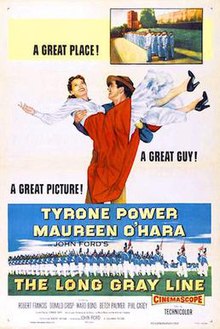
Dwight David Eisenhower, nicknamed Ike, was an American military officer and statesman who served as the 34th president of the United States from 1953 to 1961. During World War II, he was Supreme Commander of the Allied Expeditionary Force in Europe and achieved the five-star rank as General of the Army. Eisenhower planned and supervised two of the most consequential military campaigns of World War II: Operation Torch in the North Africa campaign in 1942–1943 and the invasion of Normandy in 1944.

Gordon Gray was an American attorney and government official during the administrations of Harry Truman (1945–53) and Dwight Eisenhower (1953–61) associated with defense and national security.
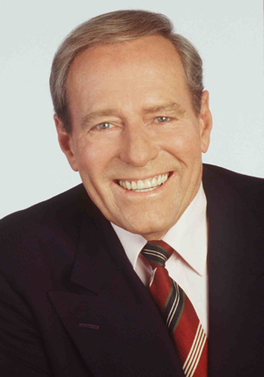
Philip Carey was an American actor, well-known for playing the role of Asa Buchanan on the soap opera One Life to Live for nearly three decades.

Kathleen Helen Summersby, known as Kay Summersby, was a member of the British Mechanised Transport Corps during World War II, who served as a chauffeur and later as personal secretary to Dwight D. Eisenhower during his period as Supreme Commander Allied Expeditionary Force in command of the Allied forces in north west Europe.

John Sheldon Doud Eisenhower was a United States Army officer, diplomat, and military historian. He was the second son of President Dwight D. Eisenhower and First Lady Mamie Eisenhower. His military career spanned from before, during, and after his father's presidency, and he left active duty in 1963 and then retired in 1974. From 1969 to 1971, Eisenhower served as United States Ambassador to Belgium during the administration of President Richard Nixon, who was previously his father's vice president and also father to Eisenhower's daughter-in-law.

Henry George Carey Jr. was an American actor. He appeared in more than 90 films, including several John Ford Westerns, as well as numerous television series.
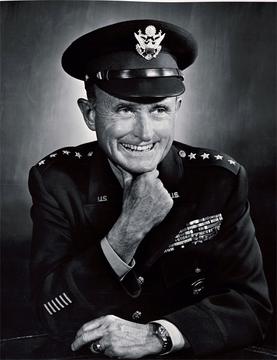
General Alfred Maximilian Gruenther was a senior United States Army officer, Red Cross president, and bridge player. After being commissioned towards the end of World War I, he served in the army throughout the interwar period and into World War II, where he was primarily a staff officer. Several years later, at the age of fifty-two, he became the second youngest four-star general in the history of the United States Army, after only Douglas MacArthur, and succeeded General Matthew Ridgway as NATO's Supreme Allied Commander in Europe (SACEUR) serving from 1953 to 1956.

Eisenhower National Historic Site preserves the home and farm of Dwight D. Eisenhower, the 34th president of the United States, and its surrounding property of 690.5 acres (279.4 ha). It is located in Cumberland Township, Adams County, Pennsylvania, just outside Gettysburg. Purchased by then-General Eisenhower and his wife Mamie in 1950, the farm served as a weekend retreat for the President and a meeting place for world leaders, and became the Eisenhowers' home after they left the White House in 1961.

West Point Cemetery is a historic cemetery on the grounds of the United States Military Academy in West Point, New York. It overlooks the Hudson River, and served as a burial ground for Continental Army soldiers during the American Revolutionary War, and for early West Point residents prior to its designation as a military cemetery in 1817.
Martin "Marty" Maher, Jr. was an Irish immigrant from Ballycrine near Roscrea, County Tipperary, Ireland, who joined the United States Army in 1898 and rose to the rank of master sergeant. He served as a swimming instructor at the United States Military Academy, West Point, New York, from 1899 to 1928.
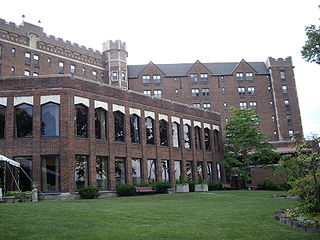
The Thayer Hotel is a 151-room "Historic Hotel of America" property located 50 miles north of New York City on the banks of the Hudson River at 674 Thayer Road in West Point, New York on the campus of the United States Military Academy. It is named after Sylvanus Thayer, West Point class of 1808, the "father of the Military Academy." It replaced the West Point Hotel in 1926.
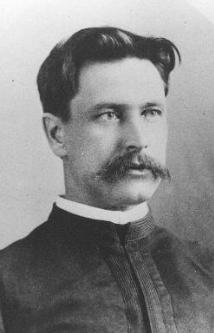
Herman John Koehler was an American football coach, athletics administrator, and United States Army officer. He served as the head football coach at the United States Military Academy from 1897 to 1900, compiling a record of 19–11–3.

Colonel Russell Potter "Red" Reeder Jr. was a United States Army officer and writer.
The Eisenhower baseball controversy refers to the allegations that the former general and President of the United States, Dwight Eisenhower, played minor league baseball for the Junction City Soldiers in the Central Kansas League the year before he attended the United States Military Academy at West Point. The story goes that he did so under the assumed name of "Wilson." The question of whether Dwight Eisenhower played minor-league baseball is not well documented and is subject to various interpretations.
The history of the United States Military Academy can be traced to fortifications constructed on the West Point of the Hudson River during the American Revolutionary War in 1778. Following the war, President Thomas Jefferson signed legislation establishing the United States Military Academy (USMA) on the site in 1802. In 1817 the academy was transformed by the appointment of Sylvanus Thayer who drastically reformed the curriculum.

The 1912 Army Cadets football team was an American football team that represented the United States Military Academy as an independent during the 1912 college football season. Under head coach Ernest Graves Sr., the Cadets compiled a 5–3 record and outscored opponents by a total of 108 to 59. The Cadets lost to a one-loss Yale team, a strong Carlisle Indians team led by 1912 decathlon gold medalist Jim Thorpe, and to Navy in the annual Army–Navy Game.
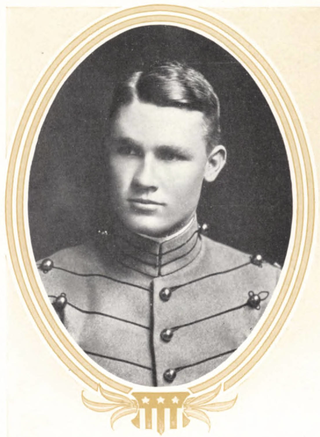
Paul Alfred Hodgson was a West Point graduate who served in World War I and World War II. While at West Point, he roomed with the future President of the United States, Dwight D. Eisenhower. The two enjoyed a lifelong friendship through their military career and their enjoyment for sports.

General of the Armies John Joseph Pershing, nicknamed "Black Jack", was a senior American United States Army officer. He served most famously as the commander of the American Expeditionary Forces (AEF) during World War I from 1917 to 1920. In addition to leading the AEF to victory in World War I, Pershing notably served as a mentor to many in the generation of generals who led the United States Army during World War II, including George C. Marshall, Dwight D. Eisenhower, Omar Bradley, Lesley J. McNair, George S. Patton, and Douglas MacArthur.

Major General Vernon Edwin "Prich" Prichard was an American football quarterback and United States Army officer. He played college football with Army and was selected as a first-team All-American in 1914. He became a career officer in the U.S. Army and rose to the rank of major general. He was lifelong friends with West Point classmate Dwight D. "Ike" Eisenhower. He served overseas during both World War I and World War II, and during the latter he commanded the 14th Armored Division in the United States from 1942 to 1944 and the 1st Armored Division from 1944 to 1945 during the Italian campaign.
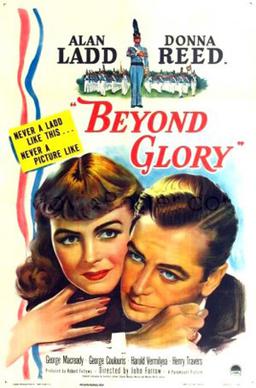
Beyond Glory is a 1948 American drama film directed by John Farrow and starring Alan Ladd and Donna Reed. Written by William Wister Haines, Jonathan Latimer, and Charles Marquis Warren, the film is about a former soldier who thinks he may have caused the death of his commanding officer in Tunisia. After visiting the officer's widow, they fall in love, and she encourages him to attend the United States Military Academy at West Point.
